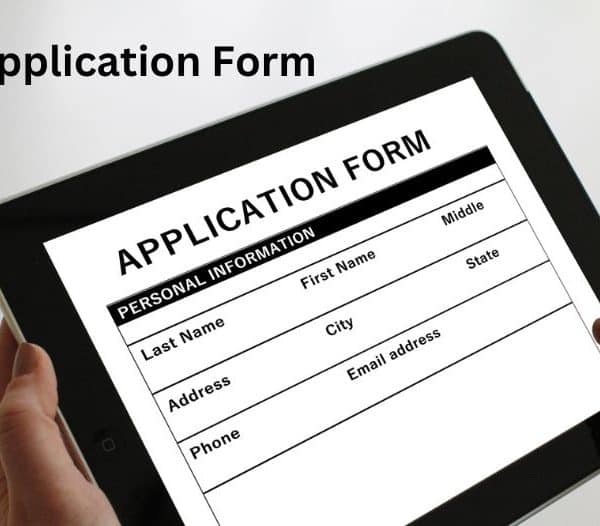Are you aspiring to crack the UPSC Civil Services Exam? Don’t know where to start? No worries! You start by knowing all about the exam pattern. In this article, we will discuss the UPSC mains exam pattern. Read the article till the end to know all about the UPSC IAS exam.
What is the Exam Pattern of UPSC Mains?
Before understanding the IAS mains exam pattern let us understand the UPSC exam first. The exam takes place in three phases:
- Preliminary Examination
- Mains Examination
- Personality Test
A candidate will have to score minimum qualifying marks to advance in the further rounds.
UPSC Civil Services Mains Pattern
The UPSC question pattern is mains is of descriptive type. Here is the mains exam pattern for UPSC:
- Paper I: – Essay writing (On given topic mainly related to current affairs)
- Paper-II:-General Studies I – History and Geography
- Paper III:-General Studies II – Governance, Constitution, Polity, Social Justice, and international relations.
- Paper IV:-General Studies III- Technology, Economic Development, Biodiversity, Security, and disaster management.
- Paper V:-General Studies IV – Ethics, Integrity, and aptitude.
- Paper VI: – Indian Language
- Paper VII: – English Language
- Paper VIII:-Optional Subject Paper I
- Paper XI:-Optional Subject Paper II
Each paper carries 250 marks.
Also Read: UPSC IES Exam Eligibility: All About UPSC India Engineering Services Exam
UPSC Syllabus for Mains
Paper-I: Essay
Candidates may be required to write essays on multiple topics.
They will be expected to keep close to the subject of the essay to arrange their ideas in an orderly fashion and to write concisely.
Credit will be given for effective and exact expression.
Also Read: Essay on Women Empowerment: UPSC Essay Paper Sample to Understand
Paper-II: General Studies-I
Indian Heritage and Culture, History
(i) Indian culture will cover the salient aspects of Art Forms, literature and Architecture from ancient to modern times.
(ii) Modern Indian history from about the middle of the eighteenth century until the present- significant events, personalities, issues.
(iii) The Freedom Struggle — its various stages and important contributors/contributions from different parts of the country.
(iv) Post-independence consolidation and reorganization within the country.
(v) History of the world will include events from the 18th century such as industrial revolution, world wars, redrawing of national boundaries, colonization, decolonization, political philosophies like communism, capitalism, socialism, etc.— their forms and effect on society.
Geography of the World and Society.
(vi) Salient features of Indian Society, Diversity of India.
(vii) Role of women and women’s organization, population and associated issues, poverty and developmental issues, urbanization, their problems, and their remedies.
(viii) Effects of globalization on Indian society.
(ix) Social empowerment, communalism, regionalism & secularism.
(x) Salient features of the world’s physical geography.
(xi) Distribution of key natural resources across the world (including South Asia and the Indian sub-continent); factors responsible for the location of primary, secondary, and tertiary sector industries in various parts of the world (including India).
(xii) Important Geophysical phenomena such as earthquakes, Tsunami, Volcanic activity, cyclone, etc., geographical features and their location-changes in critical geographical features (including water-bodies and ice-caps) and in flora and fauna and the effects of such changes.
Also Read: UPSC Geography Previous Year Optional Question Papers: All You need to Crack UPSC 2021
Paper-III: General Studies-II
Governance, Constitution, and Polity
(i) Indian Constitution—historical underpinnings, evolution, features, amendments, significant provisions, and basic structure.
(ii) Functions and responsibilities of the Union and the States, issues and challenges pertaining to the federal structure, devolution of powers and finances up to local levels and challenges therein.
(iii) Separation of powers between various organs disputes redressal mechanisms and institutions.
(iv) Comparison of the Indian constitutional scheme with that of other countries.
(v) Parliament and State legislatures—structure, functioning, the conduct of business, powers & privileges, and issues arising out of these.
(vi) Structure, organization and functioning of the Executive and the Judiciary—Ministries and Departments of the Government; pressure groups and formal/informal associations and their role in the Polity.
(vii) Salient features of the Representation of People’s Act.
(viii) Appointment to various Constitutional posts, powers, functions and responsibilities of various Constitutional Bodies.
(ix) Statutory, regulatory and various quasi-judicial bodies.
(x) Government policies and interventions for development in various sectors and issues arising out of their design and implementation.
Social Justice
(xi) Development processes and the development industry —the role of NGOs, SHGs, various groups and associations, donors, charities, institutional and other stakeholders.
(xii) Welfare schemes for vulnerable sections of the population by the Centre and States and the performance of these schemes; mechanisms, laws, institutions, and Bodies constituted for the protection and betterment of these vulnerable sections.
(xiii) Issues relating to the development and management of Social Sector/Services relating to Health, Education, Human Resources.
(xiv) Issues relating to poverty and hunger.
(xv) Important aspects of governance, transparency and accountability, e-governance- applications, models, successes, limitations, and potential; citizens charters, transparency & accountability, and institutional and other measures.
(xvi) Role of civil services in a democracy.
International Relations
(xvii) India and its neighbourhood- relations.
(xviii) Bilateral, regional and global groupings and agreements involving India and/or affecting India’s interests.
(xix) Effect of policies and politics of developed and developing countries on India’s interests, Indian diaspora.
(xx) Important International institutions, agencies, and fora – their structure, mandate.
Also Read: Daily Answer Writing Practice for UPSC 2021: When and How to Start Answer Writing Practice?
Paper-IV: General Studies-III
Economic Development, Biodiversity, Environment
(i) Indian Economy and issues relating to planning, mobilization, of resources, growth, development and employment.
(ii) Inclusive growth and issues arising from it.
(iii) Government Budgeting.
(iv) Major crops-cropping patterns in various parts of the country, – different types of irrigation and irrigation systems storage, transport and marketing of agricultural produce and issues and related constraints; e-technology in the aid of farmers.
(v) Issues related to direct and indirect farm subsidies and minimum support prices; Public Distribution System-objectives, functioning, limitations, revamping; issues of buffer stocks and food security; Technology missions; economics of animal-rearing.
(vi) Food processing and related industries in India- scope’ and significance, location, upstream and downstream requirements, supply chain management.
(vii) Land reforms in India.
(viii) Effects of liberalization on the economy, changes in industrial policy, and their effects on industrial growth.
(ix) Infrastructure: Energy, Ports, Roads, Airports, Railways etc.
(x) Investment models.
Technology
(xi) Science and Technology- developments and their applications and effects in everyday life.
(xii) Achievements of Indians in science & technology; indigenization of technology and developing new technology.
(xiii) Awareness in the fields of IT, Space, Computers, robotics, Nanotechnology, biotechnology, and issues relating to intellectual property rights.
(xiv) Conservation, environmental pollution and degradation, environmental impact assessment.
Security and Disaster Management
(xv) Disaster and disaster management.
(xvi) Linkages between development and spread of extremism.
(xvii) Role of external state and non-state actors in creating challenges to internal security.
(xviii) Challenges to internal security through communication networks, the role of media and social networking sites in internal security challenges, basics of cybersecurity; money-laundering, and its prevention.
(xix) Security challenges and their management in border areas – linkages of organized crime with terrorism.
(xx) Various Security forces and agencies and their mandate.
Paper-V: General Studies-IV
Ethics And Integrity
(i) Ethics and Human Interface: Essence, determinants, and consequences of Ethics in-human actions; dimensions of ethics; ethics – in private and public relationships. Human Values – lessons from the lives and teachings of great leaders, reformers, and administrators; the role of family society and educational institutions in inculcating values.
(ii) Public/Civil service values and Ethics in Public administration: Status and problems; ethical concerns and dilemmas in government and private institutions; laws, rules, regulations and conscience as sources of ethical guidance; accountability and ethical governance; strengthening of ethical and moral values in governance; ethical issues in international relations and funding; corporate governance.
Aptitude
(iii) Attitude: content, structure, function; its influence and relation with thought and behaviour; moral and political attitudes; social influence and persuasion.
(iv) Aptitude and foundational values for Civil Service, integrity, impartiality and non-partisanship, objectivity, dedication to public service, empathy, tolerance, and compassion towards the weaker sections.
(v) Emotional intelligence-concepts, and their utilities and application in administration and governance.
(vi) Contributions of moral thinkers and philosophers from India and the world.
(vii) Probity in Governance: Concept of public service; Philosophical basis of governance and probity; Information sharing and transparency in government, Right to Information, Codes of Ethics, Codes of Conduct, Citizen’s Charters, Work culture, Quality of service delivery, Utilization of public funds, challenges of corruption.
(viii) Case Studies on the above issues.
Also Read: How to Revise Effectively for UPSC? What Golden Tips to Follow and Mistakes to Avoid
Conclusion
The questions in UPSC Mains are Descriptive type. UPSC Mains consists of a total of nine papers including the two luggage papers which a candidate has to give for qualifying.
Now that you have all the basic knowledge related to UPSC. What step are you going to take in your preparation?
Let us know in the comment section below!







Thank you for providing the whole syllabus in such a structured way and this was very helpul, what do you guys think about this?